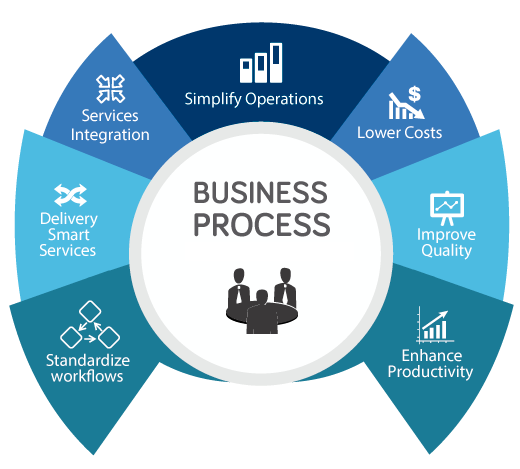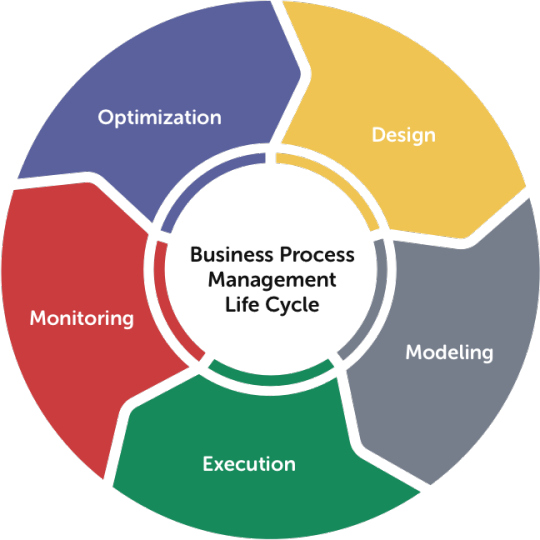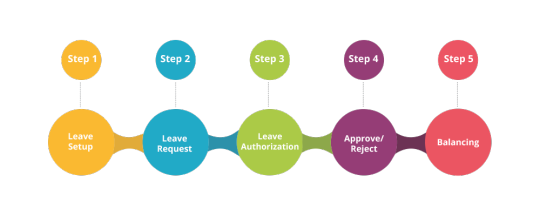Text
Unlocking Talent Assessments: A Comprehensive Guide for Optimal Hiring | Breezy HR
Introduction: Low performance and high turnover plague many HR departments, but talent assessments offer a solution. These assessments, encompassing skills, personality, and aptitude tests, leverage data to reduce bias, predict performance, and expedite the hiring process. In today's skills-centric hiring landscape, understanding the efficacy of talent assessments is crucial.

What we’ll cover:
Understanding Talent Assessments
Examples of Talent Assessment Questions
Conducting Talent Assessments Effectively
Understanding Talent Assessments: Talent assessments are structured processes used by employers to evaluate individuals' knowledge, skills, abilities, and potential. Primarily employed during the selection stage of recruitment, these assessments aim to identify candidates best suited for a given role. However, they can also aid in talent development and management, enhancing performance evaluation and decision-making for promotions.
Benefits:
Reduce hiring bias
Enhance candidate satisfaction
Expedite time-to-hire
Predict on-the-job performance
Drawbacks:
Consistency in assessments is essential
Candidate experience may suffer
Limited insight into company culture
Accessibility issues for some candidates
Types of Talent Assessments: A plethora of talent assessment tools exists, including psychometric tests, aptitude tests, cognitive assessments, and personality tests. While each serves a unique purpose, the ideal talent assessment tool should predict job success, ensure anonymity, evaluate both hard and soft skills, and be accessible across devices.
Talent Assessment Framework: A talent assessment framework is a structured strategy used by recruiters and HR professionals to evaluate candidates consistently and at scale. It helps overcome challenges associated with a large volume of applicants and ensures objectivity in the selection process.
Examples of Talent Assessment Questions: Talent assessment questions should align with the role and company culture. Examples include queries about creativity, decision-making, stress management, teamwork, and leadership.
Conducting Talent Assessments:
Identify job requirements and outcomes
Select relevant skills and scoring criteria
Utilize assessment tools effectively
Combine assessment results with other factors for informed decision-making
Provide constructive feedback to candidates
Top Talent Assessment Tools: Several reputable talent assessment tools include TestGorilla, Bryq, Criteria, Traitify, and HackerRank. Key features to consider include scientific validity, evaluation of hard and soft skills, anonymity of results, and mobile accessibility.
youtube
Conclusion: Talent assessments offer a strategic approach to hiring, mitigating biases and enhancing candidate experience. By embracing these assessments, organizations can streamline their recruitment processes and make informed hiring decisions. Consider integrating talent assessments into your hiring strategy to unlock the potential of your talent acquisition efforts.
SITES WE SUPPORT
Approval Process Tools - Wix
SOCIAL LINKS
Facebook
Twitter
LinkedIn
0 notes
Text
Understanding Business Process Management (BPM)
Introduction: Business Process Management (BPM) is a crucial aspect of modern organizational efficiency, involving the analysis, acceleration, and optimization of processes through workflow automation. To leverage the benefits of BPM effectively, it's essential to comprehend its fundamentals, establish capable teams, and implement strategic approaches.

Unlocking BPM Benefits: Before delving into BPM strategies, it's vital to recognize the significance of efficient business processes. Understanding various process types, their ownership, and the problems BPM addresses lays the groundwork for successful implementation.
Getting Acquainted with Business Processes: Business processes entail a series of sequential tasks aimed at achieving specific objectives, ranging from simple tasks like employee leave requests to complex supply chain logistics. Efficient processes enhance productivity, customer satisfaction, and overall business performance, while inefficient ones result in increased costs, dissatisfied customers, and lost revenue.
Types of Business Processes: Business processes can be categorized into operational, management, and supporting processes. Each type plays a crucial role in organizational functioning, and automating them leads to enhanced efficiency, reduced risks, and better strategic alignment.
Building an Effective BPM Team: Establishing a proficient BPM team is essential for driving organizational success. Roles such as business process champions, owners, directors, consultants, project managers, analysts, solution architects, and influencers contribute to effective BPM implementation and continuous improvement.
Adapting to Changing Dynamics: Traditionally, BPM has been the prerogative of business leadership, but with advancements in BPM software, IT departments play a more significant role. Striking a balance between business and technology requirements is key to deploying self-serve, low-code workflow automation platforms that empower employees to streamline processes.
Embracing Automation: Automation lies at the core of BPM, enabling organizations to streamline repetitive, time-consuming manual processes. By leveraging workflow automation tools, businesses can enhance productivity, reduce costs, minimize errors, and maintain strategic focus.
Fostering a Citizen Development Culture: Empowering employees to build their own low-code business solutions fosters innovation and efficiency. By creating a culture of citizen development, organizations enable employees to address process inefficiencies promptly without relying solely on IT or professional developers.
Strategizing BPM Implementation: Developing a comprehensive BPM strategy involves garnering management support, analyzing and mapping existing processes, redesigning workflows, implementing changes, and continuously optimizing them based on feedback and performance metrics.
youtube
Realizing BPM Value: By adhering to best practices, assembling competent BPM teams, and focusing on process improvement, organizations can derive tangible benefits from BPM, including increased productivity, faster time-to-market, improved quality, enhanced customer satisfaction, and better employee experiences.
Conclusion: Businesses striving for enhanced efficiency and competitiveness must prioritize BPM. By embracing BPM principles, establishing capable teams, and implementing strategic approaches, organizations can optimize their processes, reduce costs, and drive sustainable growth. Start optimizing your business processes today to stay ahead in the ever-evolving business landscape.
SITES WE SUPPORT
Approval Process Tools - Wix
SOCIAL LINKS
Facebook
Twitter
LinkedIn
0 notes
Text
Introduction to Talent Assessment: Understanding the Evaluation Process
What is Talent Assessment?
Talent assessment involves evaluating an individual's skills, knowledge, and potential to determine their suitability for a particular role within an organization. Through various tools and techniques, HR professionals aim to identify candidates who best match the requirements of the position.

Benefits of Talent Assessments
Increased Accuracy: Talent assessments provide data-driven insights into candidates' competencies, enhancing the accuracy of candidate selection beyond traditional interviews.
Improved Diversity: By focusing solely on skills and competencies, talent assessments help reduce bias in hiring, promoting diversity in the workplace.
Cost Efficiency: Selecting the right candidate through talent assessments reduces onboarding time and costs associated with hiring and training.
Enhanced Employee Satisfaction: Matching candidates to roles where they excel leads to greater job satisfaction and improved team dynamics.
Higher Retention Rates: Hiring the right candidate reduces turnover rates and ensures long-term organizational success.
Effective Talent Development: Talent assessments aid in identifying both external hires and internal candidates ready for career advancement, facilitating targeted development plans.
Types of Talent Assessments
Cognitive Ability Tests: Measure reasoning, perception, and problem-solving skills.
HR Tip: Supplement cognitive tests with other assessments for a comprehensive evaluation.
Personality Tests: Evaluate traits, values, and work preferences.
HR Tip: Customize questions to assess behavior, communication skills, and leadership abilities.
Situational Judgment Tests: Present real-world scenarios to assess problem-solving and decision-making skills.
HR Tip: Base scenarios on organizational situations for relevance.
Skill Assessments: Test specific job-related skills, such as programming languages or design capabilities.
HR Tip: Ensure fairness and relevance by selecting assessments tailored to the job.
Work Sample Assessments: Require candidates to complete tasks related to the job, such as designing an advertisement or coding a website.
HR Tip: Design tasks that accurately reflect job responsibilities for meaningful evaluation.
Implementing a Talent Assessment Framework
Assess Business Needs: Identify organizational goals and roles to determine the purpose of the talent assessment program.
Define Objectives: Establish clear objectives, such as improving diversity or identifying top talent, to guide the assessment process.
Choose Assessments: Select appropriate assessments based on reliability, relevance, and organizational goals.
Set Expectations: Communicate assessment process and expectations to candidates to ensure transparency.
Administer Assessments: Standardize assessment administration to maintain fairness and consistency.
Review Results: Analyze assessment outcomes objectively to identify top candidates aligned with organizational goals.
Follow Up: Provide candidates with feedback and make informed hiring decisions based on assessment results.
Evaluate and Adjust: Continuously review assessment effectiveness and make necessary adjustments to improve accuracy and fairness over time.
Key Takeaways
Talent assessments aid in identifying candidates with the right skills and qualities for a role.
They promote diversity, reduce bias, and enhance employee satisfaction and retention.
Various types of assessments cater to different evaluation needs, from cognitive abilities to job-specific skills.
Implementing a talent assessment framework involves assessing needs, setting objectives, choosing assessments, and continuous evaluation and improvement.
youtube
Conclusion
Talent assessment is a crucial component of modern HR practices, enabling organizations to make informed hiring decisions and foster a diverse and talented workforce. By understanding the evaluation process and implementing a comprehensive assessment framework, HR professionals can ensure the selection of candidates who not only meet job requirements but also contribute to organizational success and growth.
SITES WE SUPPORT
Approval Process Tools - Wix
SOCIAL LINKS
Facebook
Twitter
LinkedIn
0 notes
Text
The Complete Guide to Business Process Management (BPM)
Understanding Business Process Management: The Ultimate Guide
What is Business Process Management?
Business Process Management (BPM) is a methodology focused on designing, executing, monitoring, and optimizing business processes to enhance efficiency and effectiveness. It aims to streamline operations and drive continuous improvement within an organization.

Process Management vs. Project Management
While process management deals with recurring and predictable tasks aimed at optimizing daily operations, project management focuses on unique, one-off projects with defined goals and timelines. Process management emphasizes efficiency and standardization, whereas project management prioritizes adaptability and flexibility.
Why is Business Process Management Important?
BPM plays a crucial role in optimizing processes to achieve organizational goals effectively and efficiently. By streamlining operations, reducing costs, and improving productivity, BPM enhances overall performance and customer satisfaction while ensuring alignment with corporate strategies.
Benefits of BPM
Cost Efficiency: By eliminating redundancies and automating repetitive tasks, BPM reduces operational costs.
Increased Productivity: Automation and optimization of processes lead to improved productivity and faster turnaround times.
Employee and Customer Satisfaction: By freeing up time from mundane tasks, BPM allows employees to focus on value-added activities, leading to higher job satisfaction. Additionally, streamlined processes result in better customer experiences.
Stronger Corporate Strategy: BPM aligns business processes with organizational objectives, facilitating better resource allocation and strategic decision-making.
Business Process Management Examples and Use Cases
The scope of BPM applications is vast and encompasses various workflows and functions within an organization. Examples include expense approvals, travel requests, inventory management, order fulfillment, employee onboarding, and more.
Business Process Management Life Cycle
The BPM life cycle consists of four key stages:
Design: Identify existing processes, map workflow, and evaluate areas for improvement.
Execute: Implement designed processes, either manually or through automation.
Monitor: Track process performance, identify bottlenecks, and ensure compliance.
Optimize: Use insights from monitoring to make continuous improvements and drive efficiency.
Business Process Management Market
While BPM is a methodology, several vendors offer tools and platforms to support its implementation. These tools range from simple workflow management solutions to advanced low-code development platforms that facilitate process automation and optimization.
Using Low-Code App Development Platforms for BPM
Modern low-code app development platforms, such as OutSystems, enable organizations to rapidly develop and deploy BPM solutions with minimal coding effort. These platforms offer configurable tools and pre-built components to streamline the development process and drive faster innovation.
Ready to Automate Your Business Processes?
Explore OutSystems for Business Process Management and discover how low-code development can help you optimize your operations and drive digital transformation.
Useful Resources
Out Systems for Business Process Management: Elevate your business performance with low-code BPM solutions.
Create Operational Efficiency with Low-Code: Learn how low-code contributes to smarter decision-making and smoother operations.
Explore More Use Cases: Discover additional applications of BPM across various industries.
youtube
In conclusion, Business Process Management is a critical methodology for organizations seeking to enhance efficiency, reduce costs, and drive continuous improvement. With the right tools and strategies, businesses can streamline operations, improve customer satisfaction, and achieve their long-term objectives.
SITES WE SUPPORT
Approval Process Tools - Wix
SOCIAL LINKS
Facebook
Twitter
LinkedIn
0 notes
Text
The Complete Guide to Approval Processes and Workflows
Approval processes are integral to any organization's operations, spanning across departments from HR to finance. However, manual approval systems often lead to delays and inefficiencies. Automating these processes can greatly enhance productivity and efficiency. In this comprehensive guide, we delve into the intricacies of approval processes and workflows, highlighting their elements, examples, and the benefits of automation.

What is an Approval Process?
An approval process is a structured business procedure implemented at various levels within an organization. It involves seeking authorization before executing tasks such as budget planning, project initiation, and invoice payments.
Elements of Approval Processes and Workflows
Approval Request and Supporting Documents: All approval requests are typically accompanied by relevant documents, such as invoices or project plans.
Approvers: The individuals responsible for granting approval, which could include managers, directors, or team leads.
Levels of Permission: Different levels of control granted to individuals involved in the approval process, ensuring security and transparency.
Approval Logs: Detailed records of each step in the approval process, facilitating tracking and accountability.
Due Dates: Timelines assigned to each approval step to prevent delays and ensure timely completion.
Examples of Approval Processes
Invoice Approvals: Verification and approval of invoices by relevant departments to facilitate payment.
Purchase Order Approvals: Approval of purchase orders by designated authorities to manage inventory and procurement.
Project Plan and Budget Approvals: Review and approval of project plans and budgets to allocate resources effectively.
Content Approvals: Authorization of written content and creative assets before publication or distribution.
Leave Approvals: Processing and approval of employee leave requests by HR and managers.
Benefits of Automating Approval Processes and Workflows
Enhanced Security: Automation ensures secure record-keeping and control over access and permissions.
Customizability: Freedom to create and customize approval templates to suit specific requirements.
Flexibility: Ability to edit workflows as needed without recreating them from scratch.
Streamlined Operations: Smooth and efficient processing of approvals, minimizing delays and bottlenecks.
Mobile Accessibility: Access to approval processes and notifications on mobile devices for convenience.
Notification Templates: Customizable notification options for timely communication with stakeholders.
Data Collection and Signatures: Capability to collect signatures and feedback seamlessly within the approval process.
Factors Affecting Workflow Completion
Rejection Frequency: Number of times workflows are rejected or revisions requested.
Reassignment Frequency: Instances of reassignments or revisions in the workflow.
External Disturbances: Impact of external factors on workflow timelines.
Conclusion
Automation of approval processes streamlines operations and boosts efficiency within organizations. Decision-makers should consider adopting automation solutions to realize the numerous benefits they offer. Identifying areas for automation and leveraging cutting-edge tools can unlock transformative potential and drive organizational growth.
Frequently Asked Questions (FAQs)
Process of Approval Process: A structured journey involving request submission, review, and decision-making.
Example of Approval Process Workflow: Expense approval, involving submission, review, and payment authorization.
Approval Process Actions: Actions such as approving, rejecting, or setting conditions within an approval process.
Approval Process for Projects: Obtaining stakeholder consent for project initiation, changes, or milestones.
Approval Rule: Decision criterion defining conditions for approval, such as expense thresholds.
youtube
In conclusion, automating approval processes and workflows is essential for modern organizations aiming to optimize efficiency and productivity. Unlock the power of automation with Quixy, an innovative no-code platform designed to streamline approval processes and personalized app development. Schedule a demo today and experience the ease of automated operations.
SITES WE SUPPORT
Approval Process Tools - Wix
SOCIAL LINKS
Facebook
Twitter
LinkedIn
1 note
·
View note